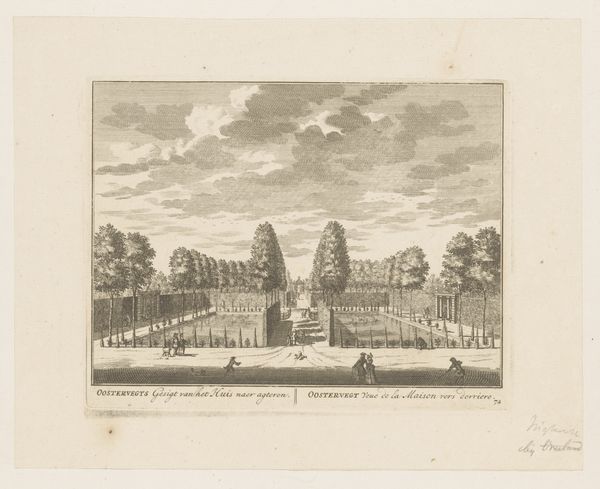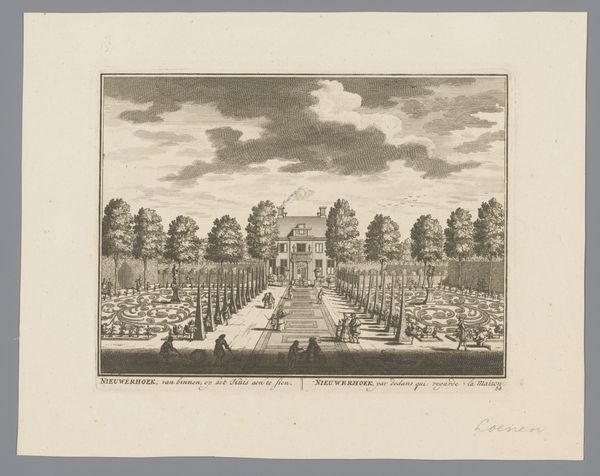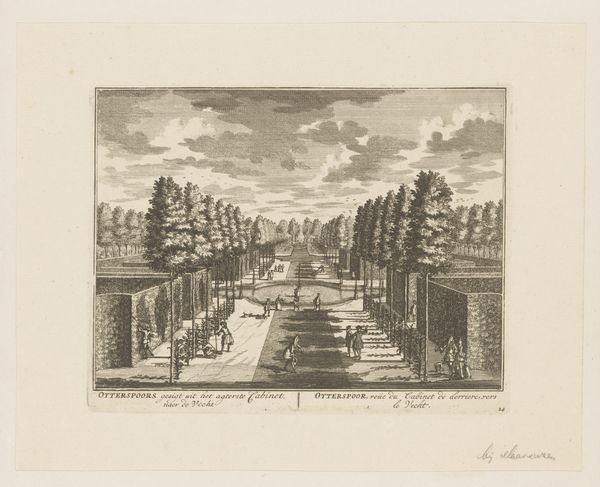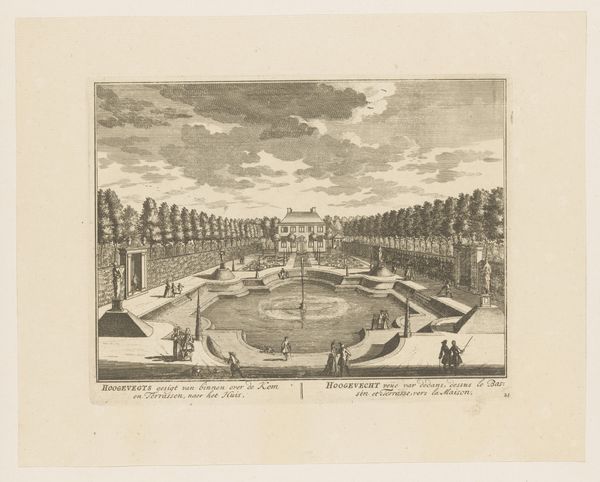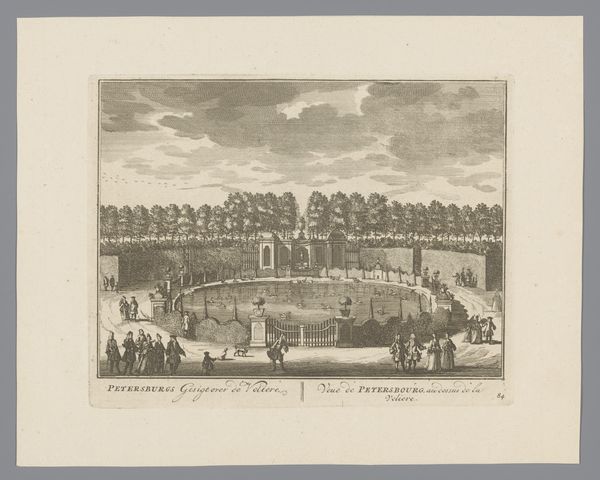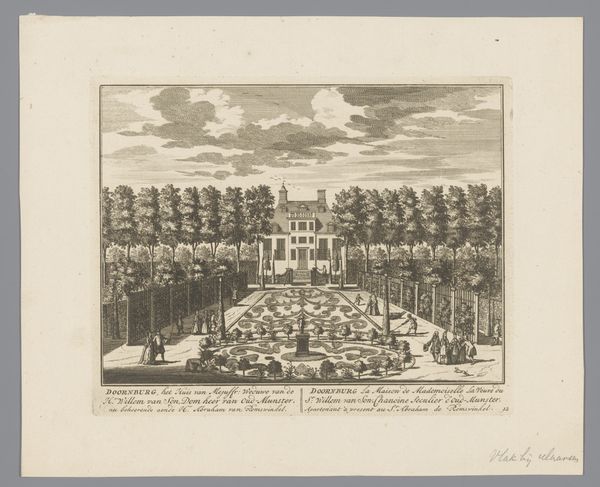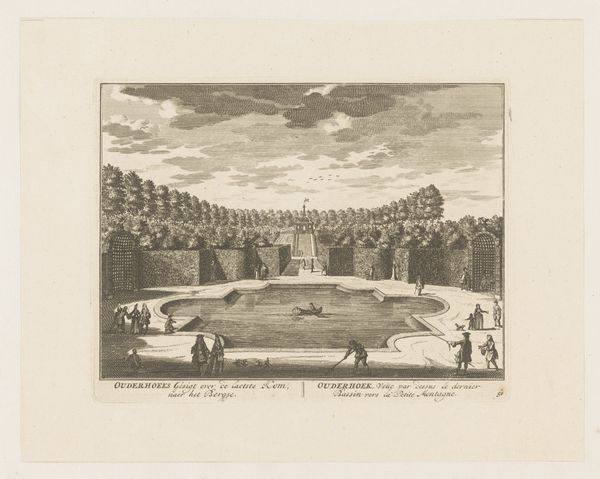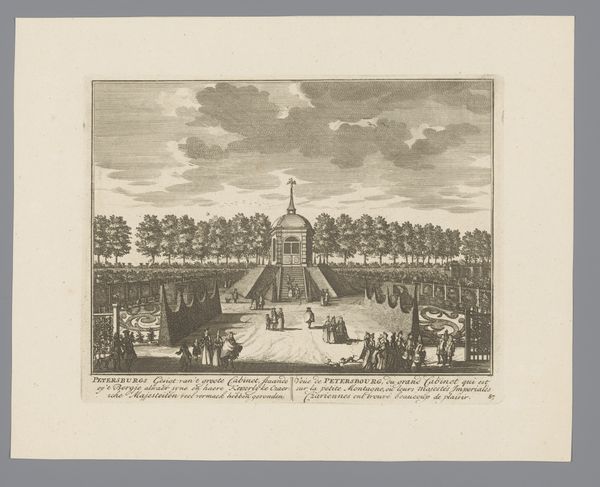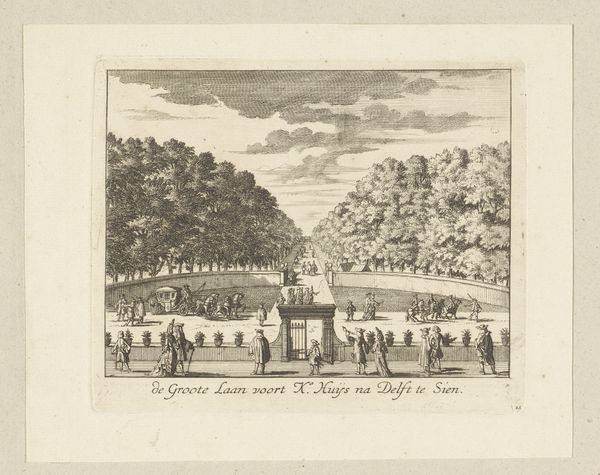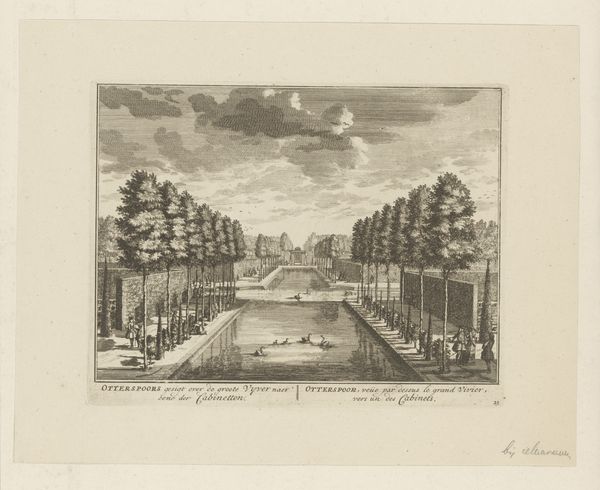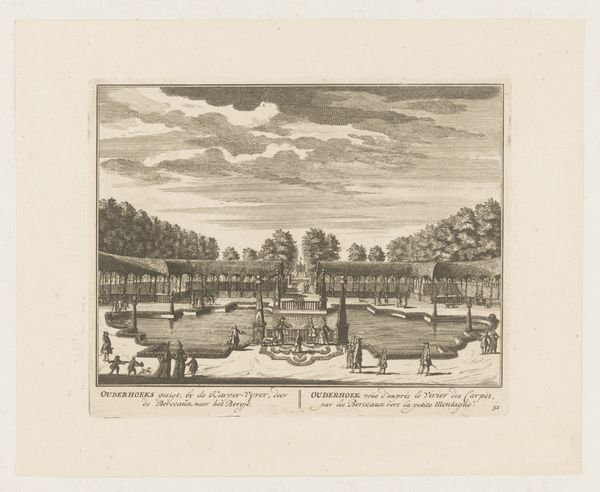
print, etching
#
baroque
# print
#
etching
#
old engraving style
#
landscape
#
etching
#
cityscape
#
genre-painting
Dimensions: height 159 mm, width 205 mm
Copyright: Rijks Museum: Open Domain
Editor: This is "Gezicht vanuit huis Wallestein richting tuin," a 1719 etching by Daniël Stopendaal, housed in the Rijksmuseum. It feels so ordered, so perfectly arranged, a glimpse into a very controlled world. What story do you think it’s trying to tell? Curator: More than a story, it presents a worldview. Look at the formal gardens: their rigid geometry speaks to a desire for control, mirroring the power structures of the time. Who gets access to such carefully manicured space, and who is excluded? What does that exclusivity communicate? Editor: So the garden isn’t just a pleasant place, it's a symbol? Curator: Precisely. Landscapes like this, carefully cultivated and visually recorded, reinforced societal hierarchies. The print itself serves a purpose: disseminating the image of wealth and status. Consider also the activity depicted; observe how leisure, status, and freedom were portrayed for a select few. Where is labor represented here, if at all? Editor: I hadn't really thought about it that way. It’s like the image is actively working to promote a certain idea of society. Curator: Exactly. Etchings like this were often commissioned by or for the elite, acting as both records and tools for solidifying their position. Do you notice anything about how different figures interact, or don't interact, within the frame? Editor: Now that you mention it, everyone seems very self-contained. There’s not much sense of community. Curator: That’s insightful. Even in leisure, social strata are subtly reinforced. Reflecting on this image reminds us that art isn’t passive; it's engaged in complex dialogues with power and identity. Editor: This has totally changed how I see landscapes from this era! Thanks so much for sharing your perspective.
Comments
No comments
Be the first to comment and join the conversation on the ultimate creative platform.
